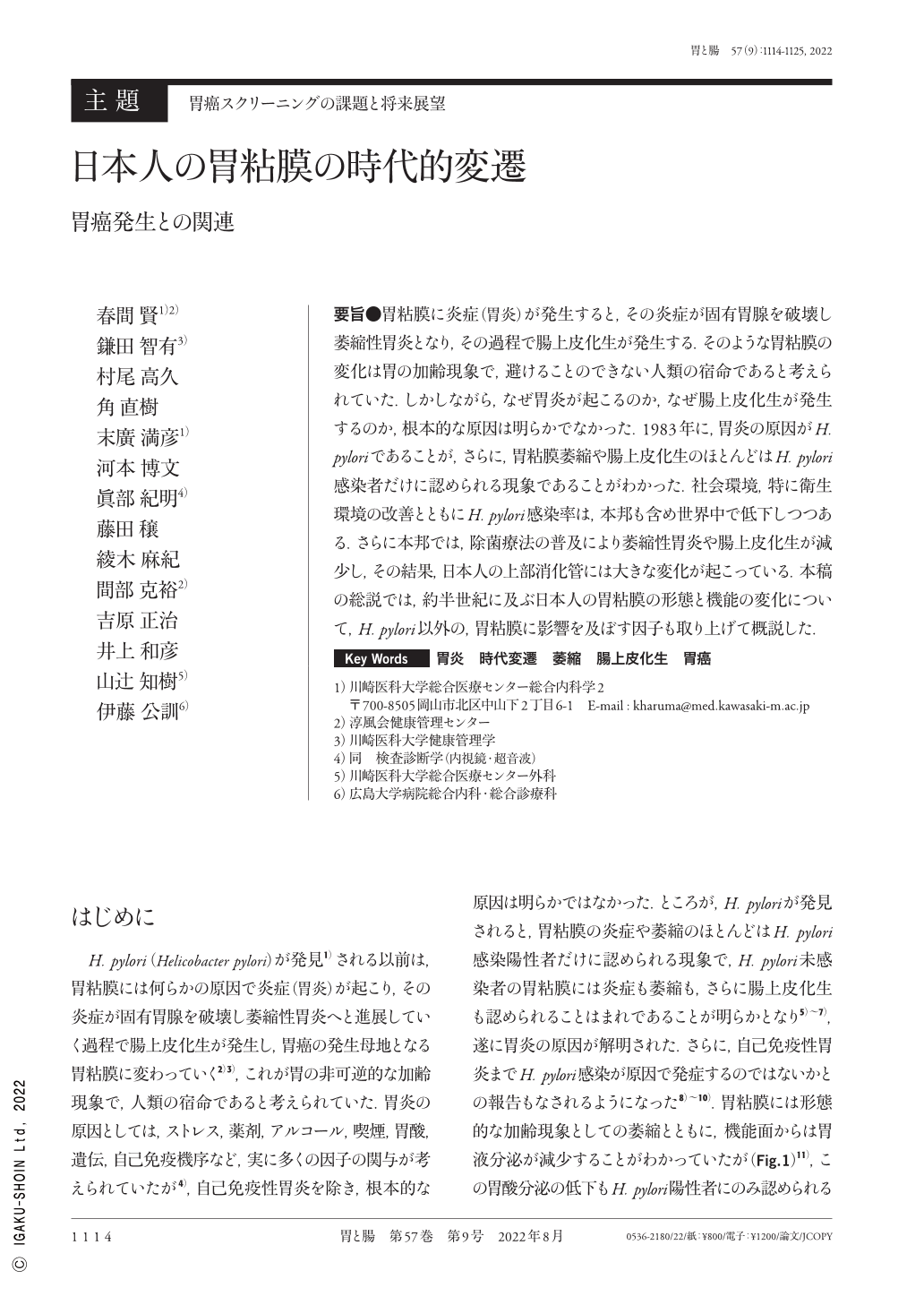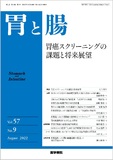Japanese
English
- 有料閲覧
- Abstract 文献概要
- 1ページ目 Look Inside
- 参考文献 Reference
要旨●胃粘膜に炎症(胃炎)が発生すると,その炎症が固有胃腺を破壊し萎縮性胃炎となり,その過程で腸上皮化生が発生する.そのような胃粘膜の変化は胃の加齢現象で,避けることのできない人類の宿命であると考えられていた.しかしながら,なぜ胃炎が起こるのか,なぜ腸上皮化生が発生するのか,根本的な原因は明らかでなかった.1983年に,胃炎の原因がH. pyloriであることが,さらに,胃粘膜萎縮や腸上皮化生のほとんどはH. pylori感染者だけに認められる現象であることがわかった.社会環境,特に衛生環境の改善とともにH. pylori感染率は,本邦も含め世界中で低下しつつある.さらに本邦では,除菌療法の普及により萎縮性胃炎や腸上皮化生が減少し,その結果,日本人の上部消化管には大きな変化が起こっている.本稿の総説では,約半世紀に及ぶ日本人の胃粘膜の形態と機能の変化について,H. pylori以外の,胃粘膜に影響を及ぼす因子も取り上げて概説した.
Inflammation of the gastric mucosa(gastritis)develops, destroying the intrinsic gastric glands and leading to atrophic gastritis, and in the process intestinal metaplasia occurs. Such changes in gastritis were thought to be a natural part of the aging process and an unavoidable fate for humans. However, the underlying causes of gastritis and intestinal metaplasia are not identified. H. pylori(Helicobacter pylori)bacteria were the cause of gastritis in 1983 ; gastric mucosal atrophy and intestinal metaplasia were observed in subjects with H. pylori infection. The rate of H. pylori infection is decreasing all over the world, including in Japan, as the social environment, particularly sanitation, improves. Furthermore, due to the widespread use of eradication therapy, the prevalence of atrophic gastritis and intestinal metaplasia has decreased in Japan, resulting in significant changes in the upper gastrointestinal tract of the Japanese population. This review examines changes in the morphology and function of the gastric mucosa in the Japanese population over the last half century, focusing on factors other than H. pylori that affect gastric mucosa.

Copyright © 2022, Igaku-Shoin Ltd. All rights reserved.


